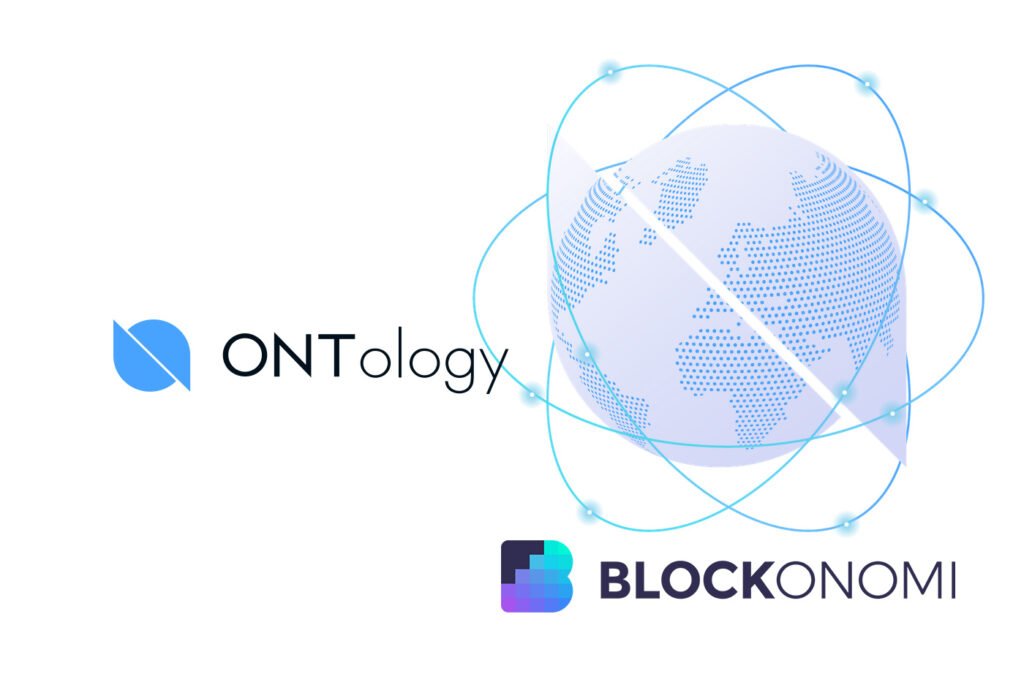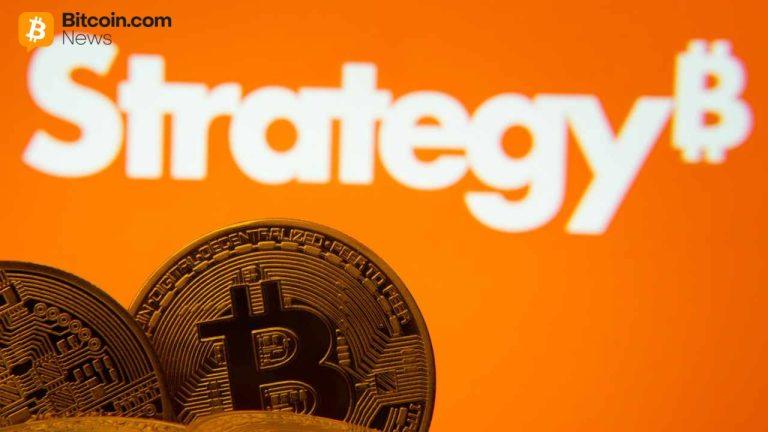Where to Buy Ontology (ONT) Crypto Coin: Beginner’s Guide

Ontology is a next-generation, public, multi-chain platform that aims to provide a single, decentralized trust ecosystem through utilizing a decoupled distributed ledger architecture, combined with a decentralized trust framework.
By implementing a series of protocol standards and decentralized management modules, Ontology creates an open and standardized platform that supports a multitude of industries and connects them to blockchain based services through an interactive and collaborative environment.
This guide will go into detail about how Ontology works and also provides you the top exchanges to buy the native ONT token.
Where to Buy Ontology ONT Coin
This section is our top picks of where and how to buy the Ontology ONT Crypto token. We chose these based on our experience of using them and considered fees, security, payment options and reputation.
- Binance: Largest Crypto Exchange with Low Fees
- Kucoin: Highly Regarded and Easy to Use for Beginners
- Gate: Solid Platform With Lots of Coins
Visit The Top Pick
eToro USA LLC; Investments are subject to market risk, including the possible loss of principal.
 Binance: Reputable Exchange with High Liquidity
Binance: Reputable Exchange with High Liquidity
Binance is the largest cryptocurrency trading exchange in daily trade volumes. The exchange offers investors full access to trade over 600 crypto assets.
The renowned platform also features a well-detailed learning curve and advanced trading tools that support well-experienced traders and investors looking to learn how to buy different cryptos. Although Binance features a user-friendly interface that facilitates a great user experience, it is more suited for well-experienced traders.
Read: Our Full Binance Review Here
Binance has a minimum deposit of $10. This enables investors to kickstart their investing journey with low fees. Investors can also initiate deposits through seamless payment methods like wire transfers, credit/debit cards, peer-to-peer (P2P) payments, and other e-wallet solutions.

Binance deposits come with a fee that varies based on the payment method used. For instance, the global exchange charges a standard fee of up to 4.50% for all deposits made with a debit/credit card.
All investors enjoy very low fees when trading on Binance, as it charges a standard trading fee of 0.1%. For investors that buy using Binance token (BNB), a discount of 25% on trading fees will be applied.
In addition, investors can rest assured that their funds and data are well protected whenever they trade on Binance. The broker features top-notch security measures like two-factor authentication (2FA), cold storage to keep most coins, whitelisting, and advanced data encryption to protect funds and data. Binance functions effectively in over 100 countries and has a spin-off regulated platform (Binance.US) that tends to US-based traders and investors.
Pros
- Trading fees at 0.01%
- High liquidity
- Wide range of payment methods
- 600+ crypto assets in library
Cons
- Interface is suited for advanced traders
- US-based customers cannot trade most coins via its subsidiary
 KuCoin: Exchange With Lots of Listings
KuCoin: Exchange With Lots of Listings
KuCoin is one of the world’s oldest and most popular crypto exchanges. The Seychelles-based broker is one of the most notable names in the market for traders who desire access to derivatives products to speculate in the market.
Currently, KuCoin provides access to over 600 cryptocurrencies. Besides trading and investing, the exchange allows investors to save, stake crypto, and even participate in Initial Exchange Offerings. With KuCoin, investors have an all-encompassing crypto hub.
Read: Our Full Kucoin Review Here
Like many brokers in its class, KuCoin could appear too overwhelming for beginners. The exchange is more suited for advanced traders who want to speculate and trade sophisticated products. So beginners might have some difficulty making use of it.
Despite this, investors could gain many benefits from trading with KuCoin. The broker has a low minimum balance of $5, with deposits available via major fiat currencies, peer-to-peer (P2P) transfers, and a few credit card options.

As for trading fees, KuCoin users pay 0.1% in fees. But the fees could decrease based on an investor’s 30-day trading volume and ownership of the company’s KCS token.
Security on KuCoin is also impressive. The system uses bank-level encryption and security infrastructures to protect users’ coins and data. KuCoin also has a specialized risk control department to enforce strict data usage policies.
Pros
- Discounts available on trading fees
- Extensive staking functionalities
- Quick P2P trading system
- Anonymous trading available
- Low minimum balance
Cons
- No bank deposit option
 Gate.io: Solid Platform With Lots of Coins
Gate.io: Solid Platform With Lots of Coins
Gate.io is a cryptocurrency trading site that aims to offer its members an alternative to the exchanges currently dominating the market.
The site has been in operation since 2017 and aims to capture a portion of the cryptocurrency trading market by offering its users hassle free access to a number of hard to find coins and up and coming projects.
The site is also designed to help investors find specific information related to both their preferred coins and overall market trends.
Read: Our Full Gate.io Review Here
Trading mostly takes place on a web-based trading platform that is similar to most cryptocurrency exchanges. The site incorporates a number of functional features such as an order book, trading history, and charting.

Pros
- A wide range of currencies
- A low fee structure
- Simple registration process
- Functional platform with a mobile app available
Cons
- Unregulated
- The team is not very transparent
- No fiat currency transfers
What is Ontology?
Ontology places a strong emphasis on open-source and technical community contributions to help improve the platform and enable long-term sustainability.
The modular design and group of protocols of the platform are intended to help facilitate adoption of the platform by businesses and organizations from a variety of industries.
Users will be able to manage their digital identity, manage and share data securely, manage distributed ledgers based on their needs, build decentralized applications, and use many more distinct features that help the Ontology Chain Network to stand out.
Functionally, Ontology consists of 4 layers as part of its technology framework. From bottom to top they include:
- The distributed ledger layer that allows for cross-chain entity mapping and data transfer.
- The core protocols that comprise the distributed trust framework, data protection and storage, and smart contract layer.
- The application framework that consists of the application modules and protocols.
- The decentralized feature set including data collaboration and trade, content sharing, and a reputation system.

At the underlying, distributed ledger layer, Ontology employs a decoupled architecture to support multiple different blockchains. The interactive protocol framework at this level creates an environment where chain mapping between different systems and industries is possible, taking the form of a matrix grid where an autonomous and versatile network is formed.
The distributed ledger includes a consensus and smart contract system as well as functional support for the upper application framework. Industries and businesses can have their own unique public chains depending on their needs, with modifiable protocols.
The key focus of this is to create a widely compatible platform for a variety of industries that also acts as the infrastructure for a highly scalable network.
Consensus Mechanism
One of the most prominent features of the Ontology platform is its implementation of a novel type of consensus mechanism that consists of a combination of the BFT (Byzantine Fault Tolerance) consensus protocol and VRF (Verifiable Random Functions).
This is known as the Ontorand Consensus Engine (OCE) on the platform or the VBFT consensus mechanism. Essentially, the OCE selects which nodes will participate in the consensus validation using a VRF, and consensus is reached by the Byzantine Fault Tolerance algorithm.
Notably, this implementation of consensus mitigates against network forks, has a low hash rate, and is stable and reliable. The modular architecture of the distributed ledger also supports replacing or adding different consensus mechanisms depending on different scenarios.
This type of flexibility is very beneficial to users looking to utilize the advantages of different consensus algorithms.
Ontology implements the NeoVM virtual machine, written in Go, which is used for executing smart contracts as well as for intelligent control logic of the application layer framework.
The NeoVM is highly scalable and employs a “deterministic call tree” technology that allows for dynamic sharding. Additionally, Ontology uses a shared data contract model that separates data and business logic, where dapps can share data with each other using generic protocols.
Ontology Network’s Trust Ecosystem
The distributed trust framework of Ontology is where the core logic of the platform resides and is a key component that leads to the unique advantages of the platform.
The framework uses a system of verifiable claims that are cryptographically authenticated and provide services such as multi-source identity verification, distributed data management, and a hybrid combination of centralized and decentralized trust models.

The centralized aspect of the trust model employs a group of approved trust anchors who are entities that verify identities and deliver trust mechanisms.
This model is an established and widely used trust system, however, it is not suitable for complex trust relationships that will inevitably arise in a multi-chain public architecture. An additional decentralized trust model is available for users for trust transfer, and is accomplished by mutual authentication between entities.
Verifiable claims on identity are used to prove certain attributes of an entity where a unique digital signature can be verified by any other entity as being authentic. Anonymous claims are also possible in this system for users who do not wish to expose the full content of a claim to a verifier, and this is achieved through leveraging the CL signature scheme.
The Application Framework and Decentralized Features of the Platform
As a result of the underlying distributed ledger layer and trust framework of the Ontology platform, Ontology is able to offer a diverse set of application protocols and modules that enable developers to build decentralized applications without needing to understand the complexities of the underlying architecture.
Providing an intuitive interface for developers in systems with an unfamiliar and complex underlying architecture will become a crucial and necessary element of cryptocurrency platforms looking for mainstream adoption.The application framework is comprised of 3 layers.
- The underlying trust layer that includes the identity and smart contract systems
- The protocol and module layer that includes application modules, protocols, SDKs, and APIs.
- The application layer where decentralized applications can be built and the underlying layers help to solve trust issues.

Importantly, Ontology implements a distributed data marketplace using an exchange protocol and trading module.
As networks and data distribution trend towards decentralization, data marketplaces will become enormous collaborative systems where important exchanges of data, computational resources, and other digital resources will occur. The inclusion of secure multiparty computation techniques also allows for network participants to conduct computations with private data without the need to share with other parties.
Ontology represents a new class of blockchain based, decentralized networks that aim to solve problems currently plaguing established platforms and providing significant enhancements from recent technological developments.
In particular, the implementation of fully homomorphic encryption, a recent development in cryptography, enables the data exchange of the Ontology platform to provide limited access control for private data as specified by a company or organization. This is a substantial improvement over existing models and gives the data exchange an added layer of useful functionality.
In the current data paradigm, data is cached in centralized repositories that are ripe for hacking and leave users of whichever platform that data is stored on essentially helpless in protecting their personal information.
With Ontology, users have complete management and access control of their personal data. Any transactions related to a user’s data will notify the data owner for authorization while also offering complete control of data storage and data lifecycle management.
Team Behind Ontology and Emphasis on Community Development
Ontology was created by the Chinese company Onchain in 2017 and has a close association and planned interoperability with the NEO platform. The platform encourages technical community proposals, suggestions, and research to help improve and maintain the platform.
They provide a diverse and extensive set of resources and information on how to help contribute on their Github page and their website.
Additionally, the developers behind the platform consistently refer to the ongoing research and development in a number of key areas of the platform such as state sharding and improved consensus protocols to help the platform scale effectively and operate with high-throughput capabilities.
Jun Li is the founder of Ontology and also the Co-founder of Onchain. Julia Yu is the Head of Marketing and active on their team Medium page as well as Reddit.
The ONT Token
The ONT token was initially airdropped to Neo holders is March 2018. The ONT token also has a utility Gas token that will be used in a similar format to Gas in NEO. You can find information regarding the circulation, price, and market analysis of the ONT token here. More extensive token distribution details are available here as well.
The ONT token has recently surged in price with the open-source release of their VBFT consensus protocol as well as the SmartX smart contract tool and a detailed roadmap.
Ontology Wallets
Software Wallet
Hot wallets, also called software wallets, are one of the most popular cryptocurrency storage options. They are always online, hence the affiliation with the ‘hot’ tag. Investors can easily get a hot wallet once they open an account with a crypto exchange. This allows them to store and manage their private keys, which prove their ownership of their assets to the blockchain network. Hot wallets are usually more convenient for everyday crypto transactions and can be custodial or non-custodial.

A custody wallet is responsible for storing assets to an exchange or a third-party platform. The user only places an order for a transfer or receipt, and the exchange signs off on the transaction, much like the traditional banking system. Meanwhile, a non-custodial or self-custody wallet gives the full responsibility to the end-user.
Hot wallets are usually free, but they are largely considered less secure due to their constant internet connectivity. An instance of a hot wallet is the Binance Wallet.
Hardware Wallet
A Hardware wallet is a device which has been created to provide an extra layer of security when interacting with your various cryptocurrency wallets.
Normally you would use your private key to move funds, the problem is though, if your computer has been compromised with malware or a virus, it is possible for your private keys to be captured and used to steal your funds.

With a hardware wallet, the private keys are stored on the device and never exposed to your computer, which means even if you are infected with such a program your private keys will remain safe. These options are safest way to store your crypto if you have more than a small amount.
Popular examples of cold storage offerings are the Ledger and Trezor line of hardware wallet solutions, read our reviews:
Mobile wallet
A mobile wallet is essentially a hot wallet on a smartphone device. They offer users an even more convenient way to use their coins for daily activities. Mobile wallets store and manage users‘ private keys while enabling them to pay for things they love with their digital assets.

These wallets are usually free and always online for transactions to be processed. Popular mobile wallets are eToro Money Wallet and Coinbase Wallet.
Desktop wallet
A desktop wallet is a PC version of a hot wallet. It is essentially software that an investor downloads into their personal computer or laptop for easy interaction with their digital coins. They also offer a browser extension which allows users to interact using an extension instead of downloading the entire software. Desktop wallets are also hack-prone due to their online nature. A popular example is the Exodus Wallet.
Paper Wallet
The paper wallet is arguably the oldest form of crypto wallet. They are no longer common in the modern crypto industry. It contains users‘ public and private keys. The paper wallet is the least secure type of wallet as it can easily be lost, stolen, or torched.
Conclusion
Ontology aims to become the comprehensive, distributed trust network with a focus on connecting traditional, real world entities to the decentralized blockchain framework. By providing some innovative new features supported by a technically advanced distributed ledger architecture, Ontology offers a suite of digital services and modules for developers and businesses alike.
With significant advancements over the last few years in cryptography and decentralized protocols, a new wave of platforms has emerged as potential improvements over existing systems. Ontology serves as a profound opportunity to capitalize on these developments as a platform that can scale effectively and help advance the trustless and decentralized nature of the Internet.
Useful Links
The post Where to Buy Ontology (ONT) Crypto Coin: Beginner’s Guide appeared first on Blockonomi.








